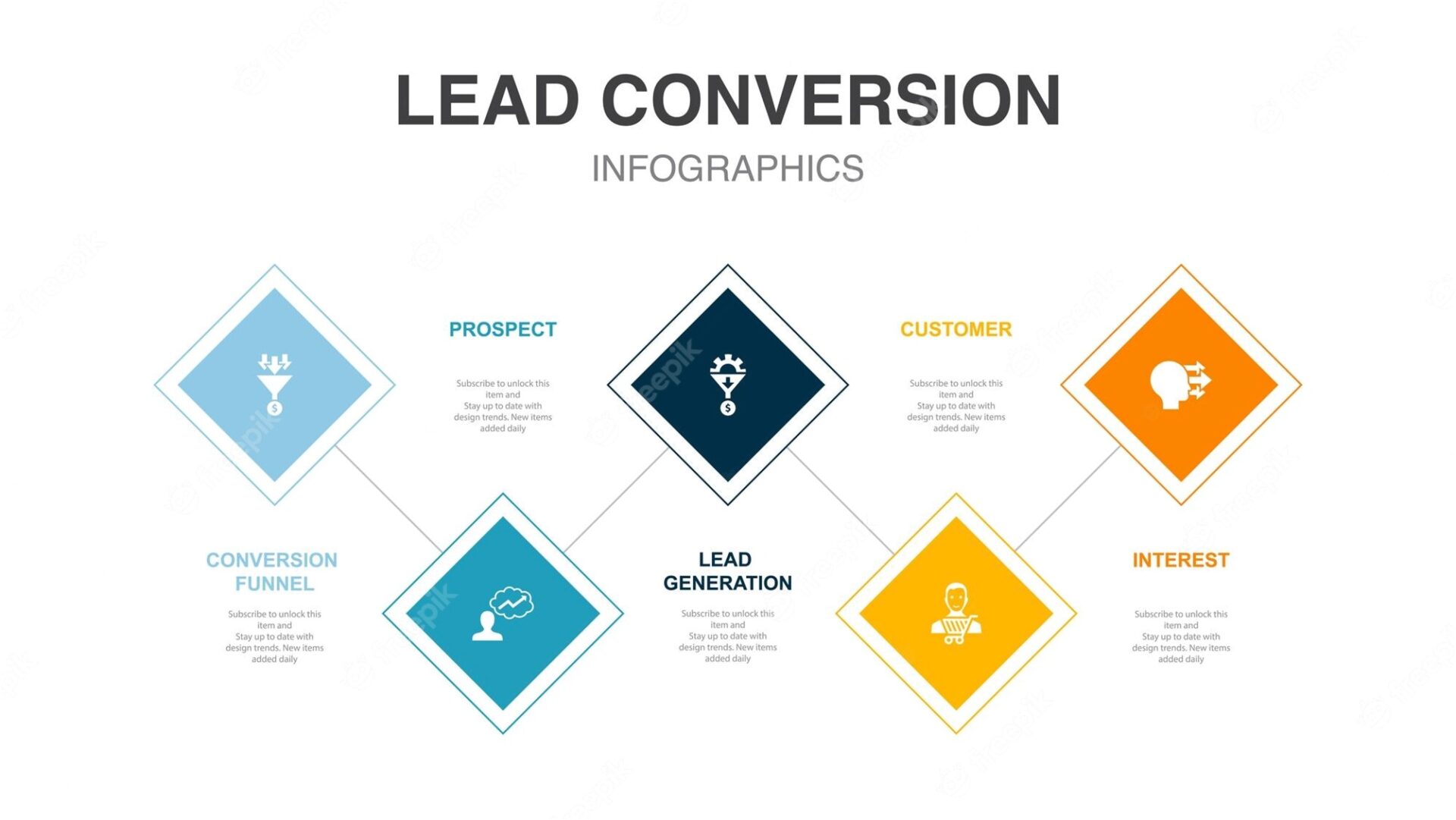Introduction to lead magnets
Every entrepreneur dreams of attracting potential customers and converting them into loyal customers. However, given the strong competition in the market, it is becoming more and more difficult to attract the attention of potential customers. This is where lead magnets come in handy. A lead magnet is an inducement or bribe offered to potential customers in exchange for their contact information. It can be free value-added content or a discount code. Lead magnets are successful businesses’ secret weapons for attracting and retaining potential customers. In this article, we’ll dive into the fundamentals of lead magnets, their benefits,
What is a lead magnet and why is it important?
A lead magnet is an irresistible offer made to a potential customer in exchange for their email address or contact information. This is an incentive that encourages the potential customer to take action, such as signing up for a newsletter, downloading a free resource, or signing up for a free trial. The main purpose of a lead magnet is to get contact information from potential customers and start building a relationship with them.
Lead magnets are essential because they provide a win-win situation for both the business owner and the customer. The potential customer receives for free or at a reduced price a valuable product that solves a specific problem or meets a particular need. For the business owner, lead magnets are an opportunity to obtain the contact details of potential customers and begin to build a relationship with them. By having their contact information, businesses can communicate regularly with potential customers and eventually convert them into loyal customers.
Benefits of using lead magnets in your business
Lead magnets offer several benefits to businesses of all sizes. Here are a few
1. Increase in lead generation
Lead magnets are an effective tool for generating leads. By offering an incentive, businesses can attract potential customers and collect their contact information. This information can then be used, which will attract new potential customers and convert them into loyal customers.
2. Better conversion rates
Lead magnets have a high conversion rate compared to other forms of digital marketing. When potential customers receive an incentive in exchange for their contact information, they are more likely to take action and provide their contact information. This increases the chances of converting them into customers.
3. Build trust and authority
Lead magnets allow businesses to demonstrate their expertise and build trust with potential customers. By offering valuable resources or tools, companies can establish themselves as thought leaders in their industry, which helps build their authority and credibility.
4. Profitable
Lead magnets are a cost effective marketing tool compared to other forms of advertising. Their creation requires only a minimal investment and can offer significant returns in terms of lead generation and conversions.
Types of lead magnets
Lead magnets come in different shapes and sizes, and businesses can choose the type that suits their business goals and target audience. Here are some of the most popular types of magnets:
1. Electronic books
E-books are a popular type of lead magnet that offer valuable information to potential customers. They are relatively easy to create and can be downloaded and played on different devices.
2. Checklists
Checklists are simple, easy-to-use tools that help potential customers solve a problem or complete a task. They are easy to create and can be used in different sectors.
3. Webinars
Webinars are online events that offer valuable information to potential customers. They are an effective tool for building trust and authority and can be used to generate leads and conversions if you offer them engaging content or high value strategic content.
4. Free Trials
Free trials are a great way to give potential customers a taste of your product or service. They help build trust and credibility and can be used to generate leads and conversions.
5. Discount Codes
Discount codes offer potential customers a discount on their first purchase. They are an effective tool for generating leads and conversions and can be used to encourage customers to make their first purchase.
Create an effective lead magnet
Creating an effective lead magnet requires careful planning and execution. Here are some tips for creating an effective lead magnet:
1. Know your target audience
The first step in creating an effective lead magnet is knowing your target audience. Understand their needs, wants, and pain points, and create a lead magnet that will solve a specific problem or fill a particular need. Which will allow you to attract new potential customers and convert them into loyal customers.
2. Offer value
The lead magnet you create should offer significant value to potential customers. It has to be something they can’t find anywhere else that solves a specific problem or fills a particular need. It can be attractive content or strategic content with high value.
3. Keep it simple
The lead magnet should be smart content that is simple and easy to use. It shouldn’t require much time or effort to use, and its value should be immediately apparent.
4. Make it visually appealing
The lead magnet should be attractive, visually well-designed content. The design should reflect the value of the lead magnet and be consistent with your brand.
5. Include a call to action
The lead magnet should have a clear call to action that encourages potential customers to take the next step. This could be signing up for a newsletter, downloading a free resource, or signing up for a free trial.
The psychology of lead magnets
The psychology of lead magnets is simple. People love free things, especially when they have value and solve a particular problem. Lead magnets offer a win-win situation for both businesses and potential customers. Businesses can collect contact information from potential customers and start building a relationship with them, while potential customers receive something of value for free or at a reduced price.
How to promote your lead magnet
Promoting your lead magnet is critical to its success. Here are some tips on how to promote your lead magnet to attract new customers:
1. Use social media
Social media is a great tool to promote your lead magnet. Post about it on your social media channels and include a link to the leads magnet.
2. Use paid advertising
Paid advertising is an effective way to promote your lead magnet. Use Facebook or Google ads to target potential customers and encourage them to sign up to receive your lead magnet.
3. Use email marketing
Email marketing is an effective way to promote your lead magnet to your existing customers. Use your email list to promote your lead magnet and encourage your subscribers to share it with their network to reach a new target.
4. Use your website
Use your website to promote your loss leader product. Include a call to action on your homepage and other relevant pages to encourage potential customers to sign up to receive your lead magnet.
Lead Magnet Best Practices
Here are some lead magnet best practices:
1. Offer something of value
The lead magnet you create should offer something of value to potential customers. It has to be something they can’t find anywhere else that solves a specific problem or fills a particular need.
2. Keep it simple
The lead magnet should be simple and easy to use. It shouldn’t require much time or effort to use, and its value should be immediately apparent.
3. Tracking
Follow up with potential customers who have downloaded your lead magnet. Send them a welcome email and start building a relationship with them.
4. Test and measure
Test and measure the performance of your lead magnet. Use A/B testing to identify the most effective lead magnet and optimize it for better results and finding new leads.
Common mistakes to avoid with lead magnets
Here are some common mistakes to avoid with lead magnets:
1. Offer something of little value
Offering something of little value will not attract potential customers. Make sure your lead magnet solves a specific problem or meets a particular need.
2. Over-complicate the lead magnet
The lead magnet should be simple and easy to use. If it’s too complicated, it will discourage potential customers from signing up.
3. Not following up
Not following up on potential customers who have downloaded your lead magnet is wasting the opportunity to build a relationship with them.
4. Not testing and measuring
Not testing and measuring the performance of your lead magnet will prevent you from optimizing it for better results.
Examples of Successful Lead Magnets
Here are some examples of successful lead magnets:
1. HubSpot’s Free CRM
HubSpot’s free CRM is a great lead magnet that offers significant value to potential customers. It is a simple and easy-to-use tool that helps companies manage their relationships with their customers effectively.
2. Neil Patel’s SEO Analyzer
Neil Patel’s SEO Analyzer is a valuable tool that helps companies optimize their website for search engines. It offers a free trial version which encourages potential customers to subscribe to the paid version.
3. Canva Design School
Canva’s Design School is a great lead magnet that offers valuable resources and tutorials to potential customers. She helps companies improve their design skills and create better visuals for their marketing materials.
HubSpot’s Inbound Marketing Course
HubSpot’s Inbound Marketing course is a comprehensive lead magnet that provides valuable inbound marketing insights. It is an effective tool for building trust and authority and generating leads and conversions.
Conclusion
Lead magnets are an effective tool for generating leads and converting potential customers into loyal customers. By offering something of value, businesses can capture contact information from potential customers and start building a relationship with them. Remember to keep it simple, visually appealing, and offer something of value. Keep track of potential customers who have downloaded your lead magnet and test and measure its performance to optimize it for better results. With these tips, you can create an effective lead magnet that will attract potential customers and help your business grow.
What is a lead magnet and why is it important for a business?
What types of content can be used as lead magnets?
How to effectively promote a lead magnet?
How to follow the results of your lead magnet campaign?
How to optimize a lead magnet to increase conversions?
What are the benefits of using a lead magnet for a business?











